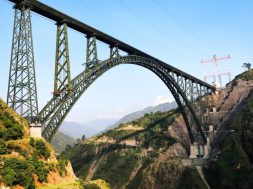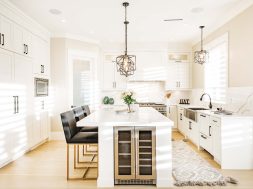Architecture is like solving a giant 3-D puzzle: Ar Shamit Manchanda
Architecture is like solving a giant 3-D puzzle: Ar Shamit Manchanda
“In many ways it is like solving a giant 3-dimensional puzzle. If you have the inclination for such work, there is no greater joy than to seeing your building get built in the real world” says Shamit Manchanda, Chief Architect, Manchanda Associates
Even today many buildings in India are being constructed without advice from any qualified architects. How do you see the situation?Generally speaking, the practice of not engaging Architects is more prevalent in smaller towns. However, this too is slowly changing as people realise the value that an Architect’s involvement can bring to a project. In bigger towns one has to get plans made by a qualified architect and only then approval is granted by local authorities.
That said, there are two main points one can consider with respect to this observation. One that India is seeing rapid urbanisation and it is projected that just by 2030 India’s urban population will grow many-fold requiring nearly 700–900 mn sq mts of residential and commercial real estate. Secondly, this unprecedented growth is also now driving regularisation of the real estate industry and more organisation in operations. This is bound to have a positive impact on the role and engagement of architects in the country.
Many big projects in India are being designed by foreign architects, what is the reason? Do Indian architects lag something from their foreign counterparts?Anything foreign is still considered superior in India and the architectural profession is not an exception. It has however been observed in many cases that it is only the name of foreign architects that is being used to increase the branding and sale-ability of real estate projects. The work is still being done by Indian architects.What would be your advice to young aspirants who want to become architects?As the dictionary would define, architecture is the art & science of creating buildings. An architect creates the very physical environment in which our lives unfold every day. Therefore, an architect not only has to have a good sense of aesthetics, design, and proportions, but also needs to be technically sound to be able to create buildings that meet all necessary safety standards and functionally perform without any glitches. In many ways it is like solving a giant 3-dimensional puzzle. If you have the inclination for such work, there is no greater joy than to seeing your building get built in the real world.
Which was the most challenging project that Manchanda Associates has come across?Every project that one does is a challenge in itself. Every site is different and every project’s requirement are different. Any site that has a lot of constraints makes the project more challenging. We recently completed a 500 bedded facility for the Nizam’s Institute of Medical Sciences, at Hyderabad. It involved setting up a 300 bedded Super Specialty Block and a 200 bedded Trauma Centre. This project had a lot of constraints, which started with building in an operational hospital campus, designing for a small site, integrating services with the existing hospital and considering cost and time restraints, besides accounting for it being an important govt. project.
What are the qualities that define a good architect?A good architect needs to be able to portray a vision. He must therefore be a good communicator, employ excellent listening and observation skills, be good at sketching and drawing, have good sense of design and proportions, have an eye for detail, have the ability to visualise, and possess solid technical abilities. He should be a believer in team work, be a problem solver, be eco-sensitive, and above all have a passion for his or her work.
There is a big scope for green and sustainable projects in the future, what are the things that must be kept in mind while designing a green project? How is it different from other projects?In the future all projects will be green projects. There is nothing very different in a green project. It simply forces one to adopt good practice trends. This may, however, require inputs from latest research which one should remain in touch with and apply appropriately. The present day ‘green’ buildings are recognisable as a brand as they are able to diligently address all key aspects of sustainability and use methods and tools to prove and justify performance. So a green building sometimes need additional skill set in planning and execution, which should be accounted for.
What all changes do you expect in the field of architecture in the near future?Design and architecture mirror a culture’s ideas, values and traditions. As society is changing at such a fast pace we need to be ready to adapt and change with the time.
Change in materials and technological advances paired with economic forces are significantly altering the construction of buildings and the practice of architecture. Moreover, over the last decade we have become aware that environmental degradation has no easy solution, and that a large portion of that responsibility lies in how we design and build. Environmentally sensitive architecture is what is going to drive the changes in the field of architecture in the near future.
What projects are you currently working on?Two important projects that we are working on at present are expansion of Guru Gobind Singh Govt. hospital in New Delhi, which involves not only adding to the bed capacity but upgrading related infrastructure.
Another project that we are working on is a “Centre for Excellence in Transfusion Medicine and Metro Blood Bank” also at New Delhi. This is going to be a state-of-the-art centre catering to the teaching as well as blood safety requirements for the whole of North India being setup by the Ministry of Health and Family Welfare, Govt. of India.
Where do you see Manchanda Associates 5 years down the line?We would like to see ourselves as a team of leading consultants in the field of healthcare architecture, planning and design, contributing our bit in improving the healthcare setup in India with an eye on sustainability in design, building, and operations
Cookie Consent
We use cookies to personalize your experience. By continuing to visit this website you agree to our Terms & Conditions, Privacy Policy and Cookie Policy.







